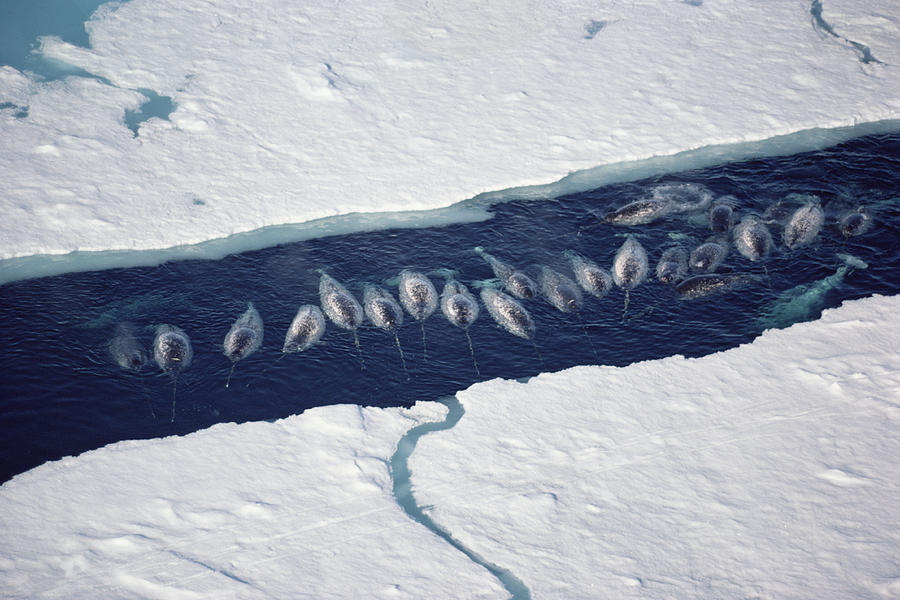The English name of the narwhal is narwhal or narwhale, and the logical name is Monodon monoceros. This medium-sized whale is famous for its novel feature of having a long spiraling horn-like tooth in front of its head, often reminiscent of mythical unicorns.

The part that looks like a narwhal’s horn is a specialized tooth. It is a spirally evolved canine with an elongated protrusion, similar to ivory.

A male narwhal has only one tusk that elongates. The tusk develops throughout the narwhal and can reach a length of 1.5 to 3.1 meters with a load of about 10 kg.

Most male narwhals have left tusks, with only about 1 of every 500 males growing right tusks. Meanwhile, only 15% of female narwhals have tusks.

The tusks of females are smaller and not spiral-shaped. Only one recently reported case of a female narwhal having two tusks has been noticed. The narwhal’s tusk doesn’t play a significant job in their daily life.

Females without long tusks live as long as males. Many theories have been proposed regarding the purposes of the tusk, like breaking ice, detecting temperature, navigating, or hunting. Be that as it may, these theories have not been conclusively demonstrated.

In Medieval times, it was believed that cutting the horns of a narwhal and crushing them into a powder could fix all diseases. Additionally, the narwhal’s horn has been utilized in various show-stoppers. During the 1600s, the Danish ruler’s throne was even adorned with narwhal teeth.

Today, their beauty and rarity actually attract the attention of the super-rich. The cost of narwhal tusks is estimated to range from $4,000 to $15,700, often compared to the value of gold.

Queen Elizabeth I (1533-1603) once paid the equivalent of a castle to possess rare narwhal tusks. Because of the potential profit, narwhals have been heavily pursued.

Although the International Union for Conservation of Nature (IUCN) doesn’t classify narwhals as immediately endangered, the 75,000 individuals alive today in the wild are still potentially threatened.

Furthermore, this animal is affected by global warming. As the Earth warms, the reduction in lower Arctic sea ice cover makes narwhals more vulnerable to both human hunting and natural predators, for example, executioner whales, polar bears, walruses, and Greenland sharks.

Narwhals can satisfy 50 years. They use ice cover or stay lowered underwater for long periods to evade predators instead of escaping. Natural adversaries of narwhals incorporate polar bears, walruses, executioner whales, and Greenland sharks.
What a fascinating encounter it is! Go ahead and share your remarks or considerations.
Read also: “Really?”, cries a baby hippo after a flock of birds lands on its back.

